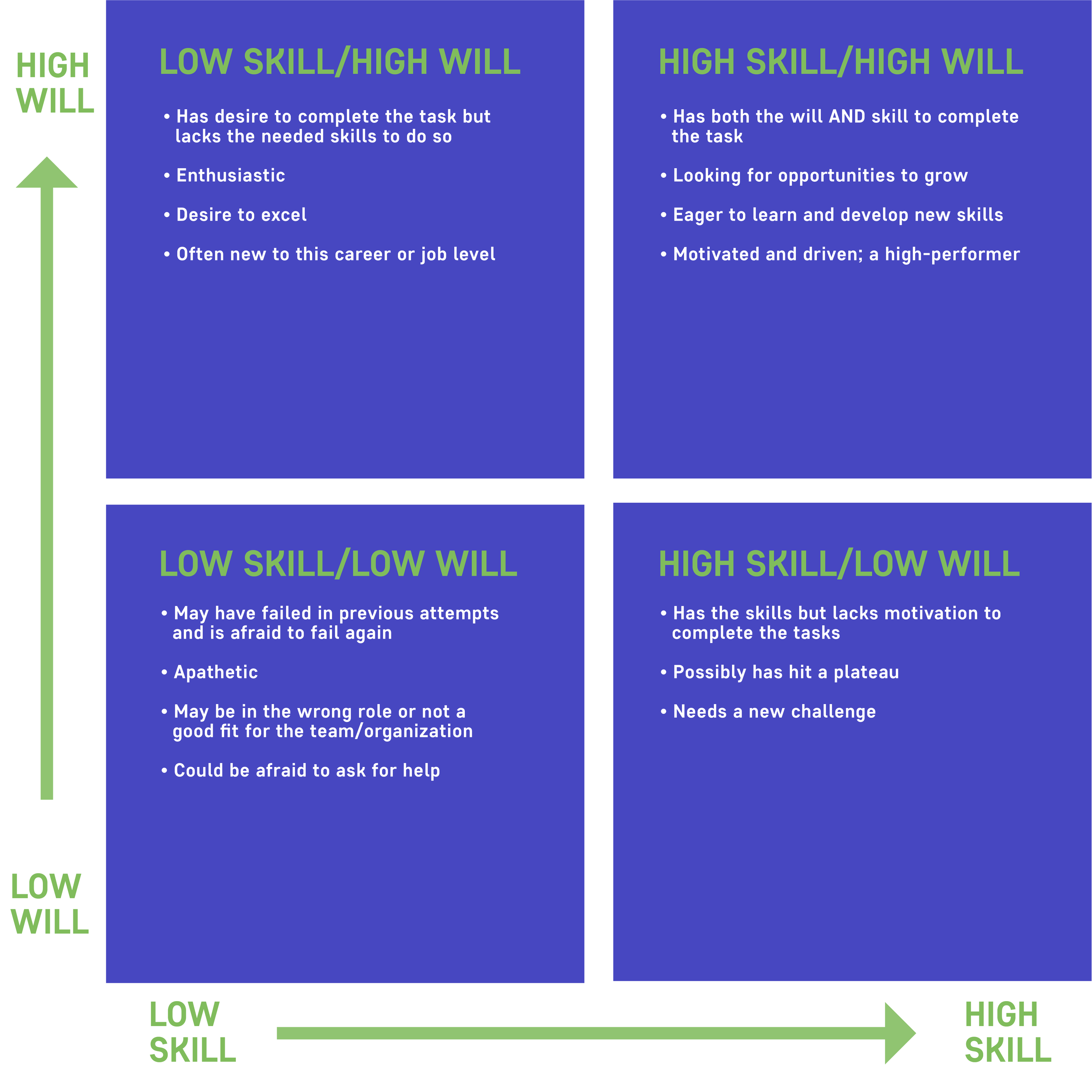Leading Others Using the Skill Will Matrix
For any given task, there is always a combination of skill and will driving our actions. An individual’s desire (will) and capability (skill) to complete a task is based on knowledge, training, attitude, natural ability, incentive, and confidence. Our skill and will levels vary along a scale from low to high; it’s important to acknowledge that variance and understand its impact on personal and team success.
Leaders are often hesitant to acknowledge their role in engagement, productivity, and retention.
You cannot change someone’s will (only they can do that), but how you interact with your team directly impacts employee performance.
You can support them by understanding their motivators, creating a plan of action together, and providing opportunities to help set them up for success.
To help you do this, try using the Skill Will Matrix, a tool developed in the 1970s by Paul Hersey and Ken Blanchard from their situational leadership model. This diagram provides a simple but effective way to customize your interactions, utilize employee strengths, bridge skill gaps, and motivate others. Simply put, it’s a way for you to help each team member up their game and improve performance.
The Skill Will Matrix is divided into four quadrants. Where a person falls depends on their ability and motivation to perform a task.
People within these quadrants typically have these characteristics:
EPI’s VP of Leadership, Deanell Sandoval, frequently considers a person’s skill and will when coaching individuals at all levels of an organization.
“Each quadrant shows different intersections of will and skill. In my coaching, I work to guide people to determine what projects and tasks energize them the most. We all know that not every task is going to excite us but when we have both the skill and the will, that is what I call the sweet spot. And the sweet spot is where we do our best work,” says Sandoval.
In this next diagram, we’ve provided recommendations on how to lead people within each section.
“Each segment brings unique growth opportunities and, therefore, requires different leadership approaches,” says Sandoval. “It’s important to understand what support and motivation is needed based on where someone falls within the matrix.”
Leading Others with the Skill Will Matrix:
Whether you’re leading your organization through a transition, onboarding new hires, discovering employees’ untapped strengths, or building the best team, this tool is a great resource to help you adapt your leadership style to reflect your team’s differing needs and challenges.
Lead each team member to success through their skill-will sweet spot!


